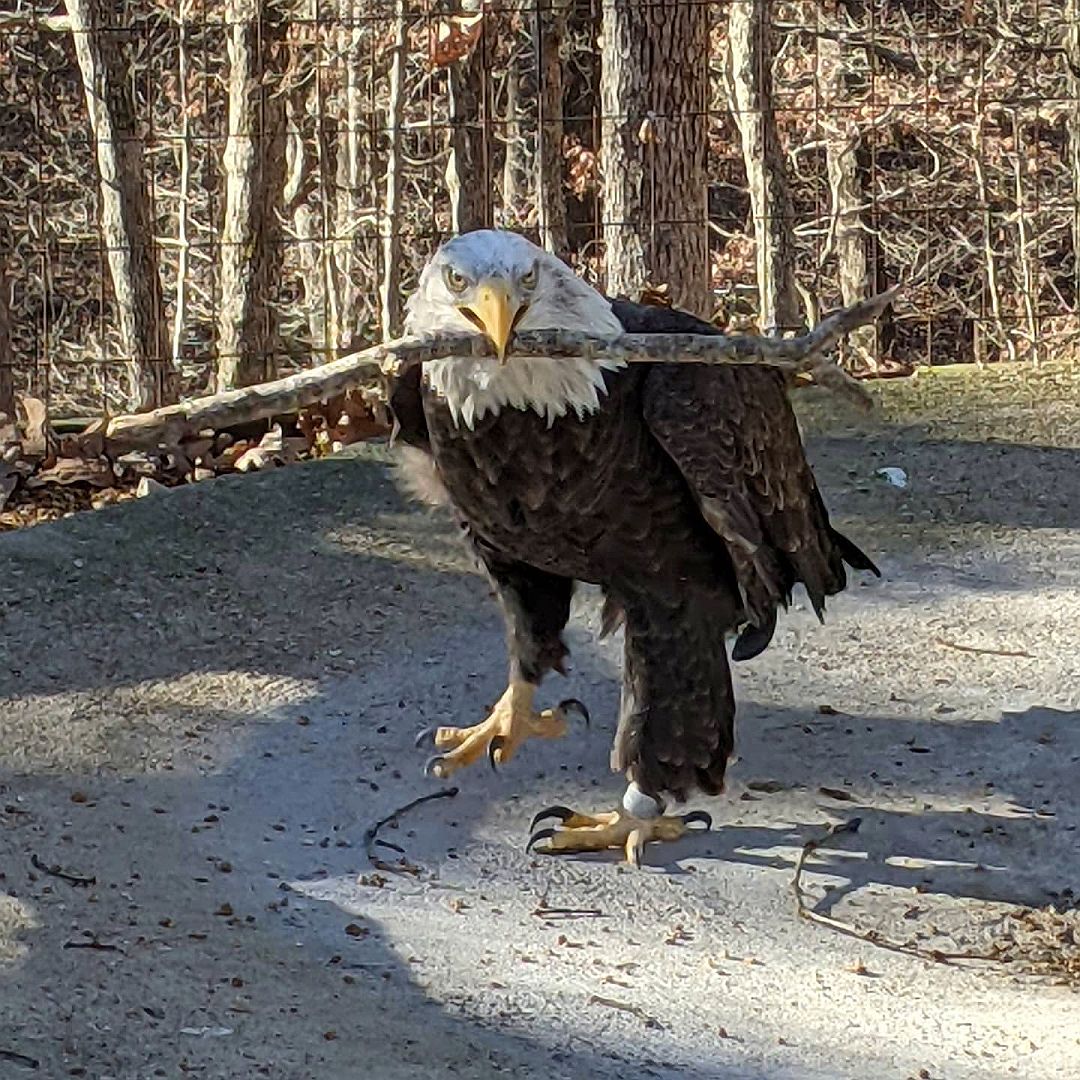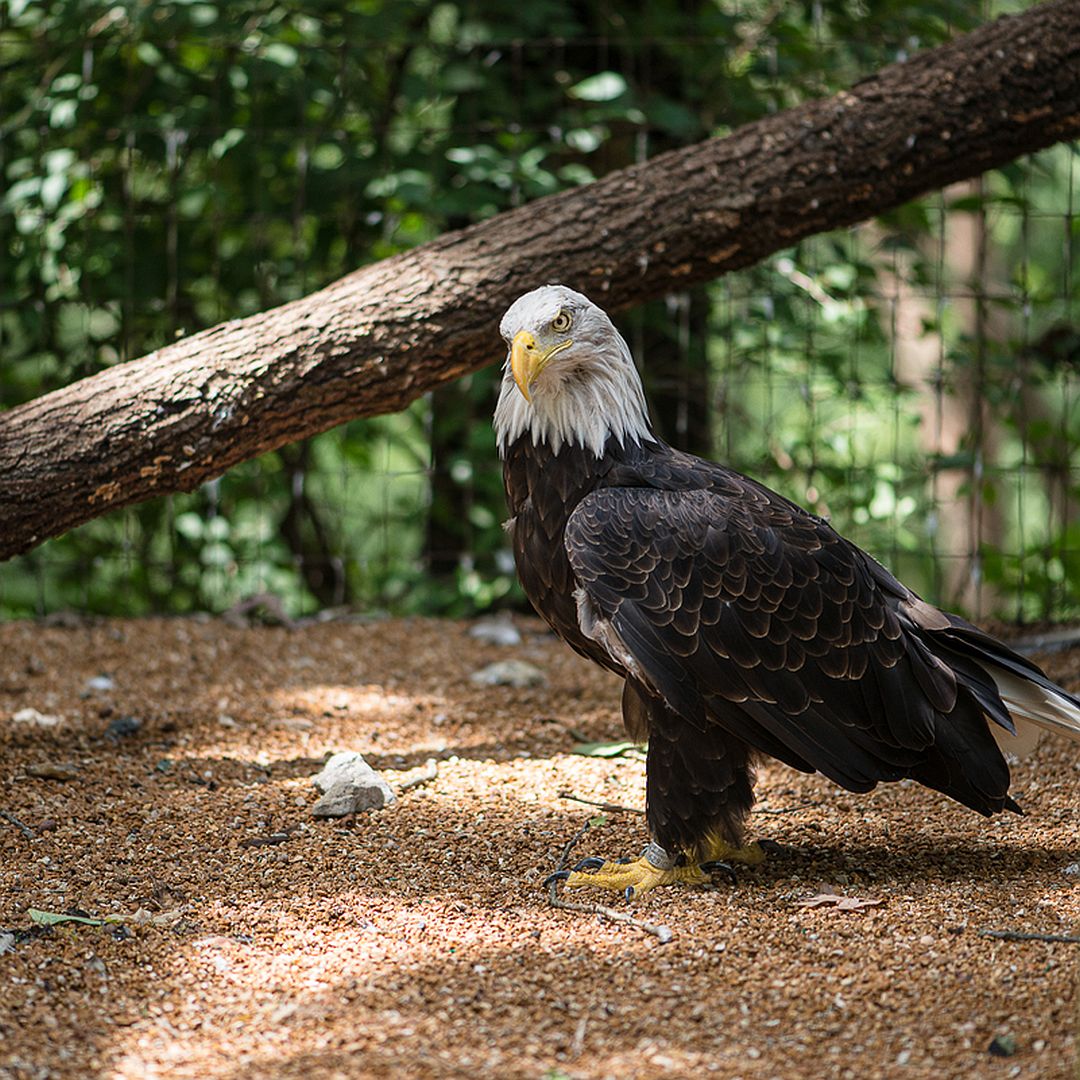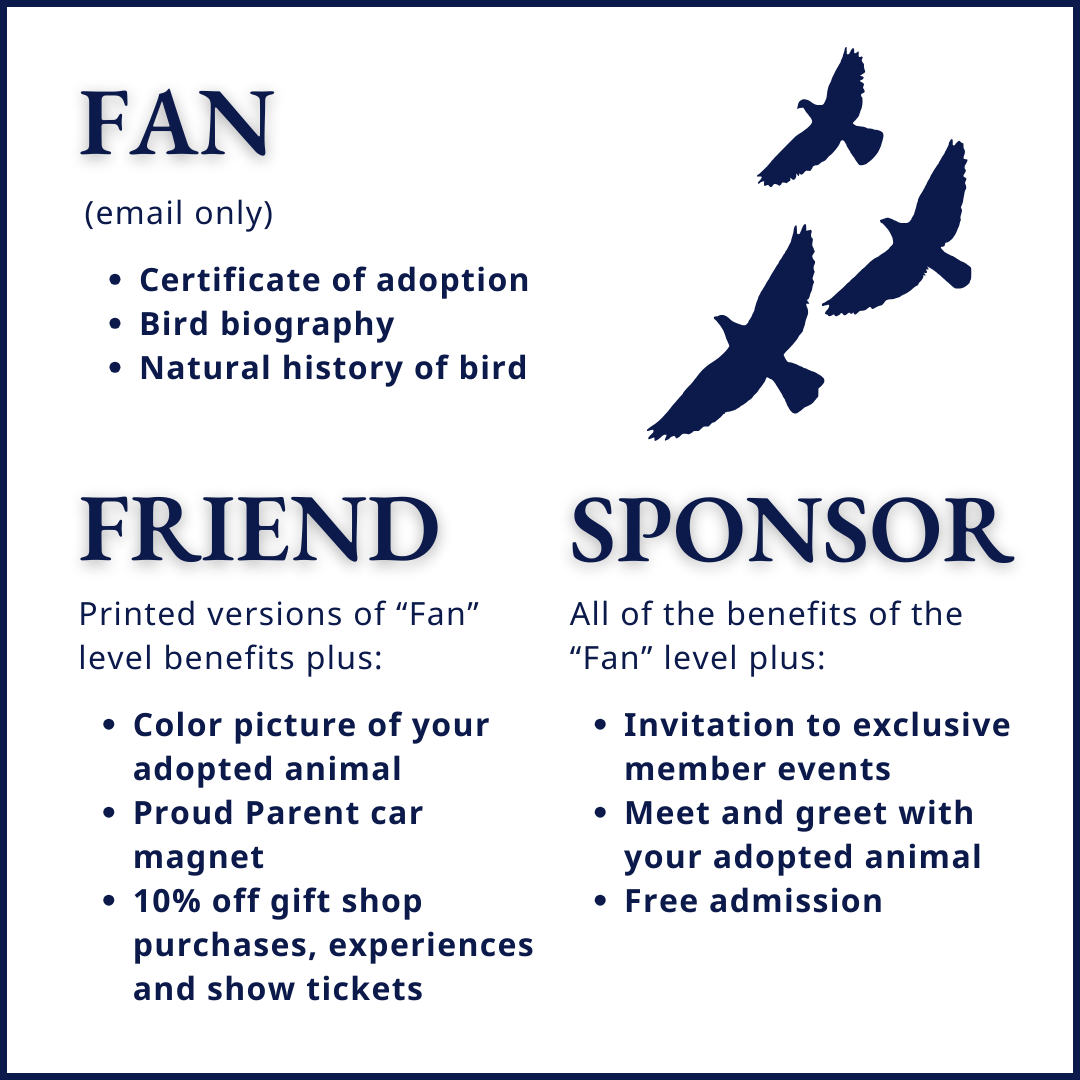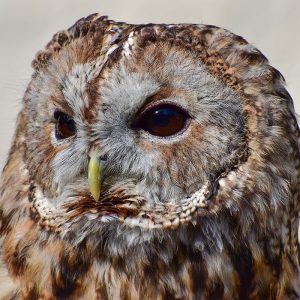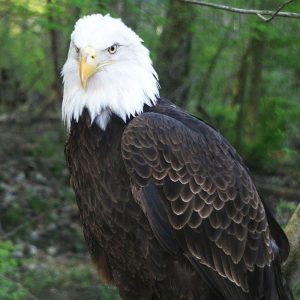Bald Eagle – Murphy
Murphy came to World Bird Sanctuary as a fledgling (the age of just leaving the nest) from a facility in Oklahoma to be released with another fledgling Bald Eagle that was hatched at World Bird Sanctuary. He unfortunately arrived with a broken leg, but once his leg was all healed a release was attempted. Murphy did not succeed at leaving his release nest and broke his left wing at his elbow. The joint fused together, and Murphy can no longer open that wing to fly.
$29.00 – $129.00
Description
HATCH YEAR: 1992
FUN FACTS ABOUT MURPHY
- Murphy became a permanent resident at World Bird Sanctuary once he was fully healed and healthy.
- He traveled to Williamsburg as a zoo show eagle for many years, then he became one of the display eagles at Grant’s Farm. There he has helped educate thousands of visitors.
- In 2003 he got a new roommate, another non-releasable eagle named Largo. When not at Grant’s Farm, you can find Murphy and Largo hanging out in their public exhibit on our Avian Avenue.
SPECIES FACTS
Scientific Name:
- Haliaeetus leucocephalus. Latin and Greek origin meaning “white headed sea eagle.”
Distribution:
- Canada and United States.
Habitat:
- Typically nest in forested areas adjacent to large bodies of water, staying away from heavily developed areas when possible.
- During winter migration, they congregate near open water in tall trees for spotting prey and night roosts for sheltering.
Diet:
- Fish (common examples include salmon, herring, shad, and catfish), but these birds eat a wide variety of foods depending on what’s available like carrion, waterfowl and mammals.
- Bald Eagles frequently harass birds including Ospreys and other eagles to steal their food. Have also been known to pirate fish from fishing vessels.
Behavior:
- Sometimes found in large numbers during winter feeding.
- Nesting time is during February. One to three eggs will be laid per year.
- Bald Eagles are powerful fliers—soaring, gliding, and flapping over long distances. They have been recorded flying at 35-43 mph.
- Build some of the largest bird nests — typically 5 to 6 feet in diameter and 2 to 4 feet tall and can take up to 3 months to build. They typically use the same nest year after year, building onto and repairing it as needed. The largest nest ever recorded was in Florida and was 20 feet deep and 9.5 feet across. It weighed 2.7 metric tons!
Identification:
- The term “bald” originated from the old English word “balde” meaning white. However, Bald Eagles do not have a fully white head and tail until 4 to 5 years old.
- Their body feathers are brown and feet and bill are bright yellow.
Additional information
| Adoption Level | Fan, Friend, Sponsor |
|---|

